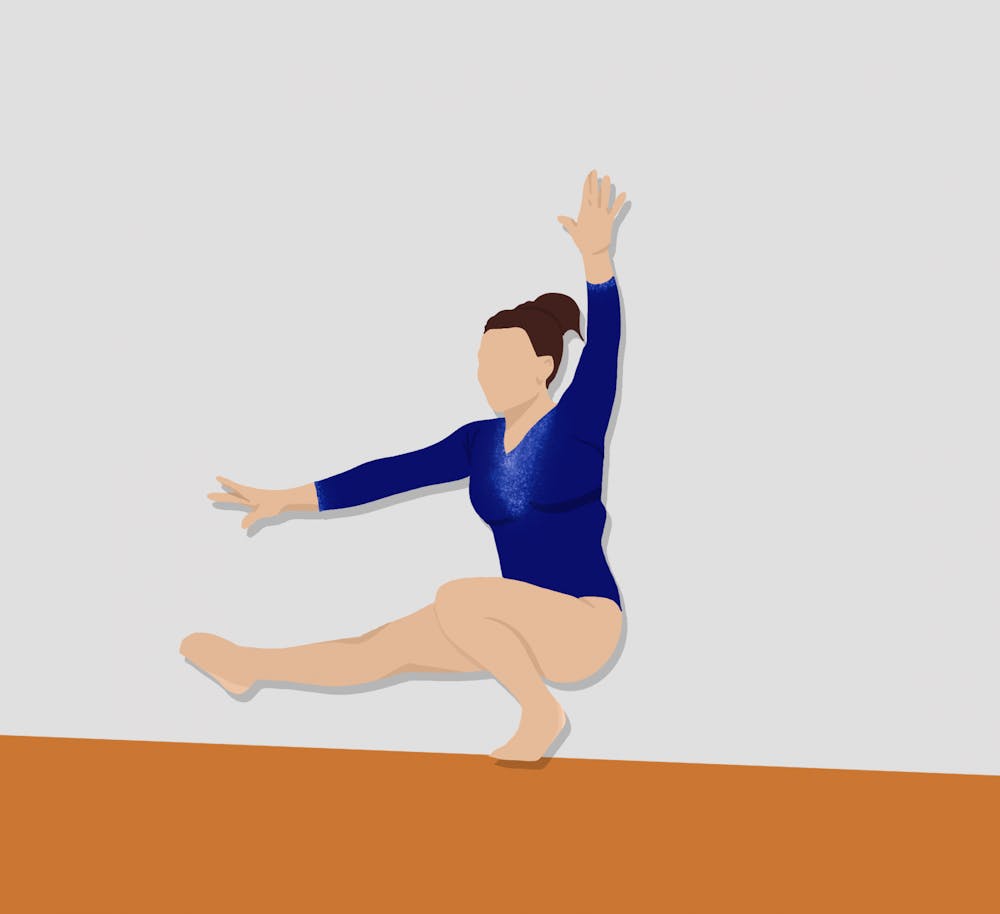The past four decades in NCAA women’s gymnastics have been dominated by the SEC and the PAC-12. Until 2021, Oklahoma was the only college outside of the two conferences to win a national championship. In the 2021 NCAA Women’s Gymnastics Championship, however, Michigan shocked the gymnastics world by becoming the first Big Ten team to win the title.
Now, out of all the Power-5 conferences, the ACC is the only league to never win a national championship in women’s gymnastics. This isn't as surprising as it sounds, though, as only three ACC universities have an NCAA-level women’s gymnastics team. However, this won’t be true for long.
Back in June, Clemson announced plans to add a women’s gymnastics team, which will make it the fourth gymnastics team in the ACC. Although there is growing interest in women’s gymnastics, there has never been a real opening for Virginia to take advantage of the sport.
The ACC does not have a gymnastics league and the three ACC schools that support a varsity women’s gymnastics team — North Carolina, NC State and Pittsburgh — all compete in the East Atlantic Gymnastics League. The Clemson announcement changed everything.
Shortly after Clemson’s statement, the ACC announced it will sponsor women’s gymnastics starting in the 2023-24 academic season — making it the conference’s 28th sponsored sport. This means that Virginia finally has an opportunity to join one of the most rapidly growing collegiate sports.
If someone was asked what collegiate women’s sports team had the highest average attendance the season before COVID-19 struck, he or she might say Oregon women’s basketball, Florida State soccer, Connecticut basketball or any other Power-5 school that has a good women’s basketball or soccer program. In reality, Utah’s women’s gymnastics team led the nation with an average of 15,273 in attendance at meets. In fact, five of the top 11 leaders in average attendance were gymnastics programs.
Gymnastics is quickly becoming one of the most followed NCAA women’s sports, and for good reason. Before the 2016 Rio Olympics, there was a consistent path to collegiate gymnastics for elite-level gymnasts. Those who made the Olympics went professional and skipped college while the dozens of other elites, who missed the selection, retired from the National Team and committed to play for a collegiate team in hopes of winning a National Championship. While elite-level gymnasts are basically guaranteed a scholarship from a top gymnastics school, around 1,500 level-10 gymnasts around the nation then fight for the remaining spots. This is the formula that has lasted since collegiate women’s gymnastics was first introduced in 1982 by the NCAA.
However, collegiate gymnastics was changed forever when 2016 Olympic gold medalist Madison Kocian and 2012 Olympic gold medalist Kyla Ross enrolled at UCLA and took spots on its gymnastics team in 2016. They were the first-ever Olympic gold medalists to compete for a collegiate gymnastics team.
Interest in gymnastics was at an all-time high after the 2016 Olympics — Kocian and Ross made collegiate gymnastics must-watch television. It’s no surprise that their teammate Katelyn Ohashi became a national sensation when her floor routine went viral, amassing over 200 million views on YouTube alone.
Now entering the 2022 season, Olympians joining college gymnastics teams seems to be the new normal. Four of the six American gymnasts sent to Tokyo are now competing for a collegiate team, two of whom have an Olympic gold medal. Some of the top foreign gymnasts are also coming over to the United States to join collegiate gymnastics such as 2020 Canadian Olympian Brooklyn Moors and British 2020 Olympic bronze medalist Amelie Morgan.
In the past, the NCAA forbade gymnasts who made money from the Olympics or sponsorships from joining collegiate teams — something that turned Olympic gymnasts away from the prospect of competing in college. This sudden increase in Olympic talent has everything to do with the increase in the popularity of collegiate gymnastics combined with the new NIL rules, allowing gymnasts to market themselves in college. The sport is more in the public eye than it has ever been and colleges like Clemson are taking note.
It won’t be long until other ACC schools add gymnastics to their list of varsity sports. Virginia should act quickly if it wants to establish itself as a threat in the ACC. Although the Cavaliers will probably not challenge the likes of Oklahoma, Louisiana State or UCLA for many years to come, fan engagement in sport is at an all-time high, with viewership in college gymnastics again expected to increase after the 2021 Tokyo Olympics.
Additionally, recruiting big-name gymnastics recruits has never been easier — not all of the USA gymnasts from Tokyo are committed to top gymnastics programs. While Grace McCallum and Jordan Chiles are enrolled at the University of Utah and UCLA, respectively, Suni Lee is enrolled at Auburn, and Jade Carey is at Oregon State — two schools that do not have prestigious gymnastics programs as they have both never won a national championship.
This surplus of international and homegrown talent entering college gymnastics will make it easier for programs to compete in their leagues — something that is already underway as seen by Michigan overthrowing Oklahoma in 2021. It will only be a matter of time before other ACC schools follow Clemson’s lead and add a women’s gymnastics program. So, if Virginia wants to be competitive in the ACC, it should act quickly in order to capitalize on the advantages given to the college gymnastics world by the new NIL rules and the past Olympics.







